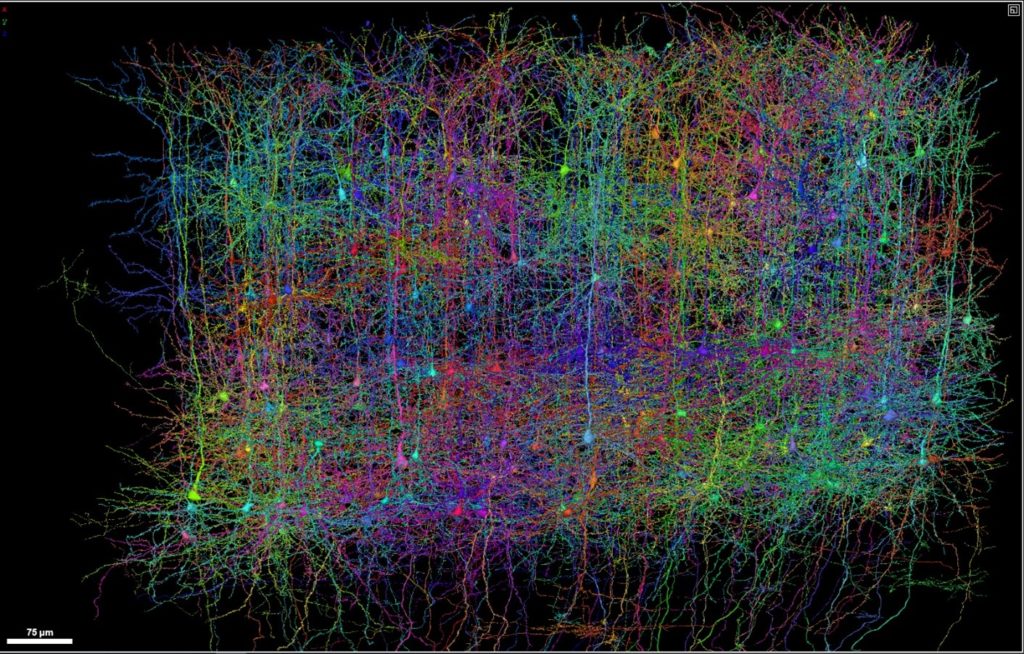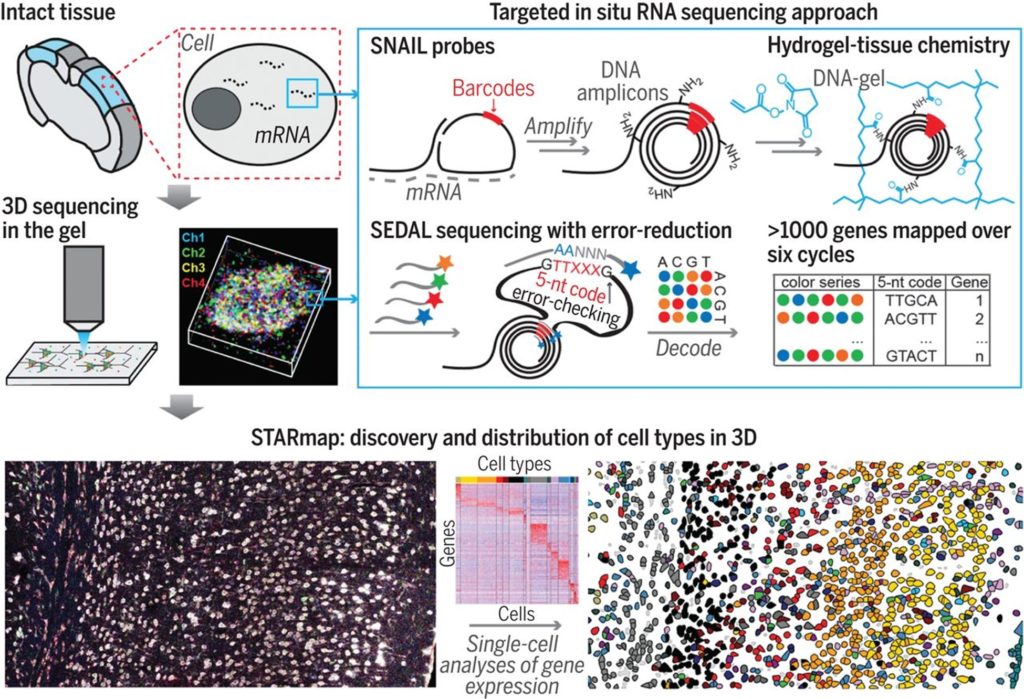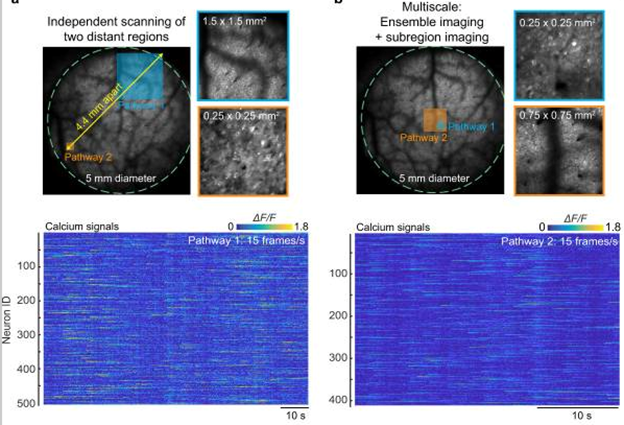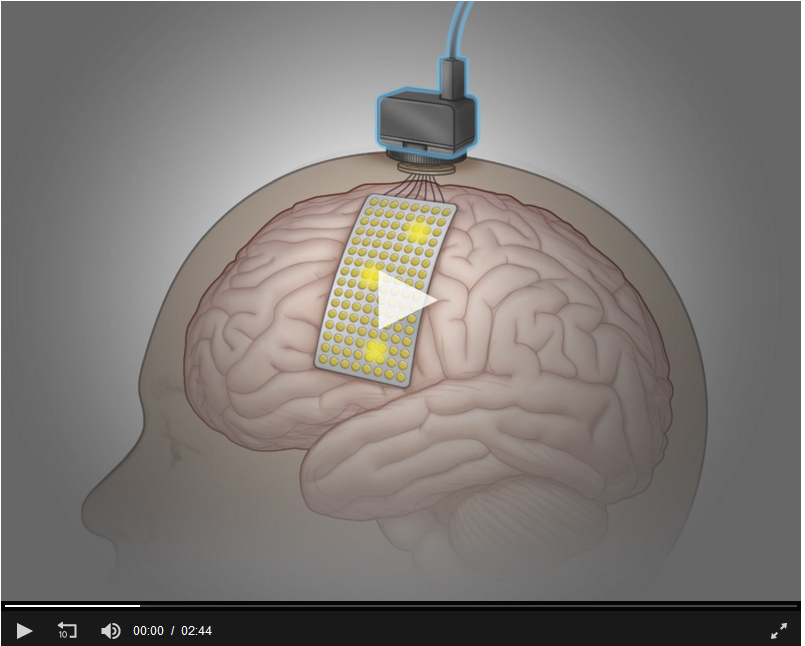The persistence of COVID-19 in 2021 did not stop Brain Research Through Advancing Innovative Neurotechnologies® (BRAIN) Initiative researchers from developing neurotechnology tools and platforms that benefit the entire scientific community and continue to move brain science forward. Here’s a snapshot of recent accomplishments, plus a look at what’s to come in 2022 for The BRAIN Initiative®.
New Tools and Collaborations
In 2021, the BRAIN Initiative Alliance (BIA) launched a new Toolmakers’ Resources section online with state-of-the-art content developed by BRAIN Initiative scientists, an associated quarterly Toolmakers Newsletter, and a Toolmakers Web Form to solicit new resources. The latest tools support 3D-neural imaging, electromyography, in vivo neuronal activity monitoring, microsurgery, and more. Researchers can search the publicly-available tools through the BIA’s Toolmakers’ Resources section.
Collaboration was a key focus for the BRAIN Initiative in 2021. A huge proportion of our researchers met virtually during the 7th Annual BRAIN Initiative Meeting, held June 15-17. The interactive online platform brought together more than 2,000 investigators, trainees, agency representatives, and members of the media from around the world. BRAIN Initiative researchers also came together via the Brain Connectivity Workshop Series, which was co-hosted by the National Institutes of Health (NIH) and the U.S. Department of Energy. The BRAIN Initiative Alliance added three new members in 2021, including the American Brain Coalition, International Neuroethics Society, and the Dana Foundation. Already, these collaborations have expanded capabilities for the BRAIN Initiative, bringing fresh perspectives and jumpstarting new initiatives.
Diverse perspectives are also fostered through recent changes to NIH BRAIN Initiative funding opportunity announcements (FOAs). Now, applications to most NIH BRAIN FOAs must include a Plan for Enhancing Diverse Perspectives (PEDP). A PEDP provides an opportunity for investigators to create or build on existing strategies that consider the inclusion of diverse perspectives in the advancement of their scientific goals. This initiative, together with new partnerships, exemplifies significant growth for the BRAIN Initiative in 2021.
Looking Back on Our Scientific Advances
The World’s Largest Online Neural Map
A collaboration between BIA partners the Intelligence Advanced Research Projects Activity (IARPA) and the Allen Institute for Brain Science, along with a large consortium of laboratories, has yielded the world’s largest map of neural circuit structure and function, known as the functional connectome. The Machine Intelligence from Cortical Networks (MICrONS) program’s dataset contains 200,000 cells, 75,000 neurons with physiology, and 523 million synapses within a cubic millimeter. The free, web-based resource provides interactive 3D visualizations of anatomical and functional data that span all six layers of mouse primary visual cortex and three higher visual areas. It is the largest and most detailed connectomics dataset ever made and was featured in MIT Technology Review.

200 pyramidal neurons from the MICrONS 1 mm3 functional connectome.
Credit: MICrONS Explorer.
Brain Cells in Unprecedented Detail
In an extraordinary suite of 17 Nature papers, the BRAIN Initiative Cell Census Network (BICCN) debuted an atlas of the mammalian primary motor cortex. The extremely detailed map offers a cell census — replete with single-cell transcriptomes, multiplex imaging, and functional data — that paves the way for mapping other brain regions. This publicly available resource – supported by BIA partners the Allen Institute for Brain Science and NIH – represents the culmination of an international collaborative effort by more than 250 scientists at more than 45 institutions across three continents. According to Dr. Ed Lein of the Allen Institute for Brain Science, the work also provides a springboard for clinical studies. He states, “the hope with these studies is that by making this fundamental classification of cell types, we can lay the groundwork for understanding the cellular basis of disease.” This groundbreaking work earned recognition by National Public Radio, Scientific American, and Science Magazine.
BRAIN Initiative scientists describe the BICCN. Credit: Video provided by the Allen Institute.
Mapping the Transcriptome
Funding from the National Science Foundation (NSF)’s NeuroNex program supported a brand-new approach to intact tissue sequencing that led to 3D transcriptome mapping in the brain. The approach, called STARmap (for spatially-resolved transcript amplicon readout mapping), hybridizes intact tissue into a 3D hydrogel for precision RNA analyses. While originally used to map cell distributions in the brain, its broad utility has now reached into plant genomics. The work was featured in a perspective published in Science.

An overview of the STARmap approach for 3D transcriptome imaging and molecular cell typing. Credit: Wang et al., 2018, Science.
Improved Microscopy
Another major development by BRAIN Initiative researchers in 2021 includes brand new microscopy that provides unprecedented brain imaging capabilities. In their Nature Communications debut, researchers working as part of the NSF’s NeuroNex Neurotechnology Hub NEMONIC describe their microscope as “Dual Independent Enhanced Scan Engines for Large field-of-view Two-Photon imaging,” or Diesel2p, which was used to support calcium imaging of neurons in the living brain. The open-source system has the largest field of view (up to 25 mm2) of any such instrument, offering subcellular resolution of multiple areas of the brain.

An example of neuronal activity at two distant (left) and overlapped (right) regions imaged simultaneously with independent imaging parameters, via the Diesel2p microscope. Credit: Yu et al., 2021, Nature Communications.
A Brain-Machine Interface
BRAIN Initiative researchers from the University of Michigan created a real-time brain-machine interface that successfully facilitated individual movement of two groups of fingers in nonhuman primates. The work, funded in part by the NSF, is a foundational step toward restoring naturalistic movement of paralyzed hands in humans. It also provides a deeper understanding of how the motor cortex controls dexterity.
An animation demonstrating two-finger simulations brain control. Credit: Center for Restorative Neuroengineering at the University of Michigan and Nason et al., 2021, Neuron.
Deep Brain Stimulation Advances
BRAIN Initiative researchers at the University of California, San Francisco (UCSF) used a new deep brain stimulation (DBS) device to manage the symptoms of patients with Parkinson’s disease. The device records brain activity continuously as patients go about their lives — no clinical visits necessary — and delivers stimulation signals in real time in response to the brain activity that it records. “It allows us, really for the first time, to understand the brain activity behind specific neurological problems as they occur in the real world,” said Dr. Philip Starr, UCSF Professor of Neurological Surgery and member of the Kavli Institute for Fundamental Neuroscience (Kavli IFN) at UCSF. The devices are able to deliver personalized, adaptive DBS at home in response to Parkinson’s symptoms. Read more about this work in the NIH and UCSF press releases.
A video overview of real-time brain wave recording and its applications. Credit: UCSF Department of Neurological Surgery, Weill Institute for Neurosciences.
BRAIN Initiative researchers also captured more than 1,000 hours of brain recordings from patients with obsessive compulsive disorder (OCD). Using techniques similar to the Parkinson’s disease work, these recordings occurred in the clinic, during teletherapy sessions, and during normal life activities at home. By synchronizing the recordings to behavioral markers, researchers have taken an important step toward designing improved and adaptive DBS treatments for OCD and other neuropsychiatric disorders.
Brain Activity Turned Into Speech
Another group of BRAIN Initiative researchers at UCSF helped to dramatically improve one man with severe paralysis’ quality of life. The researchers developed a “neuroprosthetic” technology that taps into the brain’s natural speech machinery and translates brain activity into speech. Using this new system, the man was able to communicate at a rate of up to 18 words per minute with up to 93 percent accuracy. “To our knowledge, this is the first successful demonstration of direct decoding of full words from the brain activity of someone who is paralyzed and cannot speak,” said Dr. Eddie Chang, Professor of Neurological Surgery and member of Kavli IFN at UCSF. This is an important milestone in the development of communication technology for people with severe paralysis and speech loss. Read more about this study in the UCSF press release.

A video overview of the neuroprosthetic approach. Credit: Moses et al., 2021, New England Journal of Medicine.
What’s Next for 2022?
BRAIN Initiative researchers are excited to build on their 2021 accomplishments, including extending the BICCN’s brain cell census efforts in humans and completing a connectivity map of an entire mammalian brain. These and other efforts comprise three exciting NIH BRAIN Initiative Transformative Projects: the Human Brain Cell Atlas, Next Generation Technologies for Brain Microconnectivity Analysis, and the Armamentarium for Brain Cell Access.
Join the momentum by participating in BRAIN Initiative events in 2022! Neuroscientists from around the world can participate in a first-of-its-kind EMG electrode workshop from the comfort of their own laboratories. The Kavli Foundation, Simons Foundation, and others have supported this innovative opportunity run by Dr. Sam Sober from Emory University. The goal is to fabricate 1,000 cutting edge EMG electrodes, ship to 100 labs around the world, and train users in a fully-remote course.
Researchers of all levels are also encouraged to attend the 8th Annual BRAIN Initiative Meeting, scheduled for June 21-22, 2022. Save the dates for these and other opportunities by downloading or requesting a free copy of the 2022 BRAIN Initiative Calendar.
Keep up with all the latest U.S. BRAIN Initiative research, funding, collaborations, and more on our news hub. We can’t wait to see what 2022 brings!

